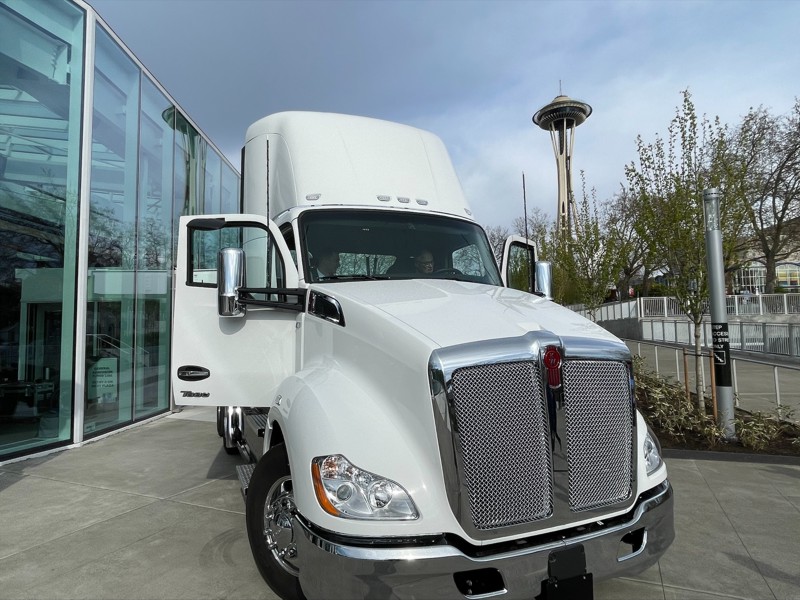
Electric trucks will help reduce dirty diesel exhaust in Washington. Photo by Anna Lising
Washington’s commitment to reducing harmful, planet-warming air pollution by electrifying transportation got another big boost last week.
A waiver granted by the federal Environmental Protection Agency allows the state — and other states that follow California’s advanced clean truck standards — to start transitioning medium- and heavy-duty trucks from diesel power to zero-emissions technology.
The waiver clears a path for Ecology’s Clean Trucks program to take effect. Our program requires truck manufacturers to sell and register an increasing percentage of new, zero-emission alternatives to diesel, starting with model year 2025. Over time, this switch will significantly improve air quality and help reduce the greenhouse gas emissions that have led to the global climate crisis.
Addressing environmental justice
Communities most vulnerable to exposure from diesel emissions because they are located near ports and major roadways will benefit the most, explained Joel Creswell, Climate Policy Section Manager in Ecology’s Air Quality Program.
“Diesel exhaust from freight transportation, including ships, trains, and trucks, poses a significant health risk to millions of people across the country,” Creswell said. “We can do our part to reduce those risks by modernizing the state’s medium- and heavy-duty truck fleets, in much the same way we are moving in that direction with sales of new, zero-emission passenger cars and trucks.”
Transportation is the leading contributor to greenhouse gas emissions in Washington, and heavy-duty diesel emissions are driving an increasing proportion of those emissions — up from 13% in 2005 to 16% in 2019.
“In addition to heating the atmosphere, diesel emissions are linked to numerous cardiovascular and respiratory diseases, as well as certain forms of cancer,” said Matt Kadlec, Senior Toxicologist for Air Quality. “Washington is taking common sense actions to clean the air and create healthier living conditions for the people who live, work, and play here.”
How our Clean Trucks program works
Beginning with model year 2025, truck manufacturers will be required to sell an increasing percentage of zero-emission medium- and heavy-duty vehicles in Washington every year. The scale of sales requirements varies depending on weight class:
|
Model Year |
Class 2b-3 (8,501-14,000 lbs) |
Class 4-8 (14,001-60,000 lbs) |
Class 7-8 Tractors (26,001-60,000 lbs) |
|
2025 |
7% |
11% |
7% |
|
2026 |
10% |
13% |
10% |
|
2027 |
15% |
20% |
15% |
|
2028 |
20% |
30% |
20% |
|
2029 |
25% |
40% |
25% |
|
2030 |
30% |
50% |
30% |
|
2031 |
35% |
55% |
35% |
|
2032 |
40% |
60% |
40% |
|
2033 |
45% |
65% |
40% |
|
2034 |
50% |
70% |
40% |
|
2035 and beyond |
55% |
75% |
40% |
The program rewards sellers of zero-emission trucks with credits, which can be banked and traded, and imposes penalties on sellers who don't meet the requirements. Once a year, truck manufacturers will send reports to us to examine for compliance. In addition, they can submit reports as far back as model year 2021 to earn “early action credits,” which can also be banked and used for compliance when regulations take effect for model year 2025.
About 680,000 medium- and heavy-duty vehicles are on the road in Washington today — 1 in 5 of the approximately 3.2 million total motor vehicles in service.
We will be conducting a survey of medium- and heavy-duty vehicle fleets in the state from June 1 to Sept. 30, 2023, to better understand current fleet operations and where these vehicles are in use.

